The Aztec Clay Mask isn’t a good treatment for cystic acne because it can be excessively drying to the skin. Excess dryness will cause naturally oily skin to produce more oil, leading to clogged pores and even more inflammation and breakouts.
Aztec Clay Mask is one of the most purchased beauty products on Amazon, with over 60,000 (mostly) positive reviews.
It’s hailed as the must-have product for everyone with oily and acne-prone skin, and it’s said that it can even be used as a body and a scalp treatment for those dealing with conditions such as seborrheic dermatitis and excessive dandruff.
However, although the Aztec Clay Mask may be a holy grail for some, there are those that have had rather unpleasant experiences with this product.
And as someone who has already tried the mask and belongs to the latter category, I want to talk about why I think that the Aztec Clay Mask isn’t good for cystic acne or any skin condition for that matter.
Therefore, in this article, I will take a deeper dive into this “miracle” treatment, explain its potentially harmful side effects, and suggest five best treatments for cystic acne.
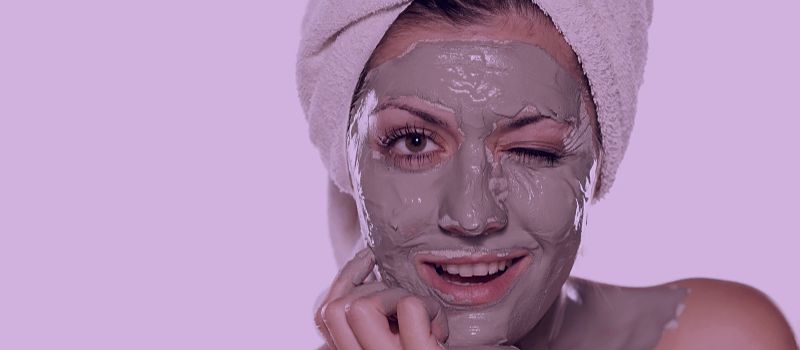
What is the Aztec Clay Mask?
Aztec Clay Mask is a treatment that’s supposed to pull toxins and impurities from the skin, balance out oil production, reduce congestion, and help get rid of acne.
The product comes in a powder form, which you will need to mix at a 1-to-1 ratio with either a toner or purified/bottled water, depending on the texture and sensitivity of your skin and the actual concern you want to address.
The explanation of how the Aztec Clay Mask works so well is that the negatively charged molecules of the clay bind with the positively charged molecules of supposed toxins in the skin, which get pulled out once the mask is washed off.
What’s The Aztec Clay Mask Made Of?
The Aztec Clay Mask is made out of 100% natural calcium bentonite clay.
Bentonite clay is an absorbent aluminum phyllosilicate clay consisting mainly of the mineral known as montmorillonite, which is why it’s also called Montmorillonite clay.
It usually forms from weathering of volcanic ash, most often in the presence of water, and it has recently been taking off as a wellness trend among people looking to “detoxify” their bodies and defend against illnesses.
However, its origins in beauty rituals go way back and are thought to come from centuries ago when civilizations used bentonite as a healing method to promote better health, heal wounds, ward off diseases, and protect their skin from the sun.
What Does The Aztec Clay Mask Do For Your Skin?
Bentonite clay is supposed to benefit your body due to its ability to produce an electrical charge when it comes in contact with liquid.
When the clay touches any fluid, it takes on a different charge and binds to any present toxins within the fluid.
Bentonite clay, having negatively-charged molecules, “seeks” toxins in the body to bind with and then effectively remove them.
So the Aztec Clay mask is supposed to remove the “toxins” from your skin, remove excess oil, and clear up the congestion that causes acne.
RELATED: Best Exfoliating Face Masks
Is Aztec Clay Mask Good for Cystic Acne?
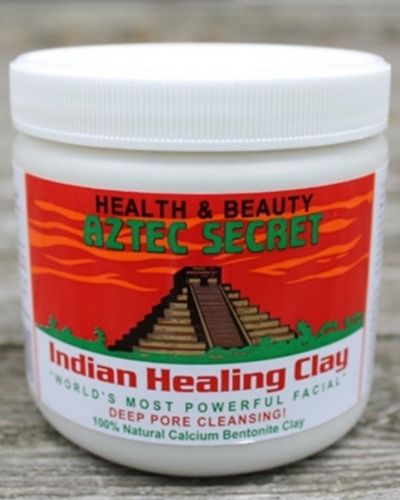
Aztec Clay Mask should work wonders for cystic acne, but only in theory.
Many people believe that the clay absorbs excess oil and draws out impurities from the skin; however, these claims are not necessarily correct.
So, let’s start by tackling the first issue: absorbing excess oil.
When a component or an ingredient in skincare products is claimed to have “oil-absorbing” properties, this usually means that it’s drying out your skin.
Our skin needs its natural oil to stay lubricated, balanced and protected, and if we didn’t have oil to do all these things – our skin would feel dry, stretched, tight, uncomfortable, and it would possibly crack and bleed due to dryness.
Take the soles of our feet and the palms of our hands as an example. These areas are usually dry because they are the only areas of the entire body where we don’t have sebaceous glands (the glands responsible for producing oil.)
Additionally, people who have naturally dry skin, a.k.a. skin that lacks oil, are also familiar with these issues, which is why they tend to use heavy-duty moisturizers to help replenish some of the oil their skin lacks.
So, our natural oil is amazing, and we don’t need to dry it out because it has a beneficial function for the skin.
Besides that, our natural oil isn’t the sole responsible factor for breakouts.
When excess oil gets stuck inside the pore and can’t push its way to the skin’s surface to lubricate the skin and perform its protective action, it starts to change its pH.
This change in the pH attracts a particular strain of bacteria known as C. acnes that already live on healthy skin without causing problems.
The issue starts occurring when C. acnes find their ideal environment to feed and proliferate, and this environment is a pore clogged with hardened sebum and dead skin cells clumped together.
From there, our immune system senses the overgrowth of bacteria and begins to fight against it by causing inflammation that manifests itself as a pimple on the skin.
So, although our natural oil plays a small role in the entire process, it’s still not the only component responsible for acne, which is why we shouldn’t be overdrying it to death in an attempt to tackle an issue caused by a few other factors.
With that said, let’s move on to the second issue: drawing out impurities from the skin.
When a component or an ingredient in skincare products is claimed to be able to “draw out impurities from the skin,” this is false marketing, and the company that promotes this message shouldn’t be trusted because they are lying to you.
The only impurities we have are on the skin’s surface because our skin is the organ that prevents stuff from the external world from entering inside of us.
And you may very well remove these impurities by simply cleansing your skin with water or a gentle cleanser.
You don’t need dehydrating clay to “pull toxins and impurities” from your skin because there aren’t toxins and impurities inside the skin.
The only way our bodies detox is through using the toilet, not through our pores.
Also, as I mentioned above, cystic acne is caused by severe inflammation due to the overgrowth of bacteria inside the pores, not by supposed “impurities.”
Yes, cellular debris inside the pore consists of dead skin cells, white blood cells, and hardened oil, but this isn’t an “impurity” like you would think it is.
These components are what the acne-causing bacteria use to feed and proliferate, so if a living organism uses them as food, they can hardly be considered to be impure or dirty in any way.
And lastly, if you think that clay molecules can actually enter inside the pores and dissolve sebum and dead skin cells that are causing a clog, which leads to breakouts, you are also wrong.
Clay molecules are too big to enter inside the pore, and they don’t have the ability to dissolve sebum, cellular debris, or other metabolic byproducts from the surrounding skin tissue.
Molecules such as salicylic acid and benzoyl peroxide can do this, but not clay.
Can Clay Masks Make Acne Worse?
Clay masks can make acne worse in some cases due to their extremely dehydrating action on the skin, which throws the skin into panic mode and causes it to produce even more oil to compensate for the lack of hydration.
Additionally, some clay masks also contain other ingredients such as heavy emollients and oils that could be clogging the pores and causing breakouts.
Does The Aztec Clay Mask Remove Dark Spots?
The Aztec Clay Mask doesn’t have melanin-inhibiting properties that would remove dark spots.
In some cases, clay masks can even make dark spots appear even worse because they can compromise the skin barrier by dehydrating the skin, thus compromising the skin’s ability to deal with inflammation.
This could potentially result in more pimples, and eventually more dark spots.
RELATED: Best Serums For Hyperpigmentation
Best Treatments for Cystic Acne
When choosing a treatment for cystic acne, you need to look for something that contains active ingredients with pore-clearing properties.
Good options include:
- Salicylic acid – excellent for dissolving hardened oil inside the pores.
- Benzoyl peroxide – oxygenates the clogged pores, thus destroying the airless environment bacteria live in.
- Retinoids – promotes cellular turnover that purges the dead skin cells stuck inside the pore.
Additionally, when targeting cystic acne, it’s also a good idea to opt for a leave-on treatment instead of a mask, as these products need a longer time to work and actually address the issue.
Rinsing them off after ten-fifteen minutes will hardly provide any meaningful results when using over-the-counter masks.
With all that said, here are the best treatments for cystic acne:
RELATED: Best Products For Cystic Acne
DMK Skincare – Beta Gel – $90+
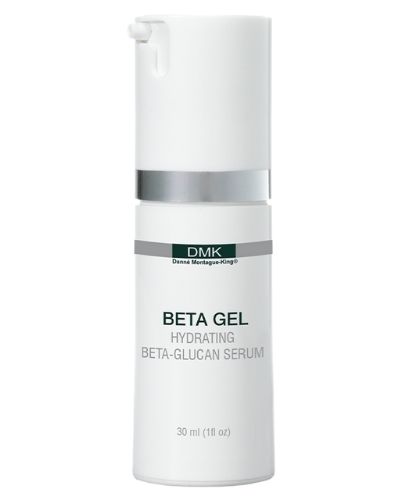
DMK Beta Gel is definitely the treatment you want to look into if you are dealing with cystic acne.
The main active ingredient in this serum is beta-glucan, a polysaccharide sugar found in the cell walls of various mushrooms, plants, algae, yeasts, or oats.
This component is known to have immune-enhancing benefits, which help protect the body from pathogens, AKA bacteria, thanks to their ability to increase macrophage activity, which are the scavenger cells that search for and destroy pathogens.
In skincare products, beta-glucans also provide many benefits, from intensive skin repairing and wound-healing properties to antioxidant activity, skin-soothing abilities, and providing an excellent softening and moisturizing action on the skin’s surface.
All these benefits can help reduce acne, inflammation, sensitivity-induced redness and improve your skin’s overall health.
Paula’s Choice – Anti-Redness Exfoliating Solution – $30
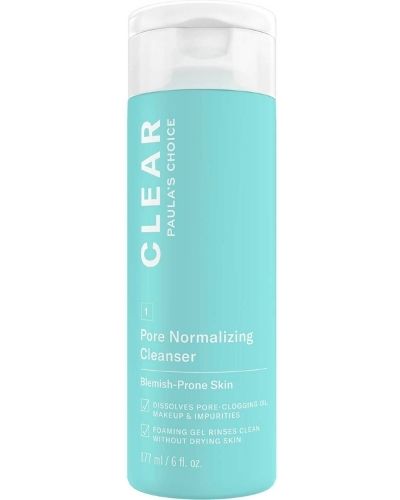
The Anti-Redness Exfoliating Solution with 2% Salicylic Acid is a lightweight toner that contains 2% salicylic acid followed by simpler ingredients such as butylene glycol and green tea extract that focus on hydration and soothing the skin.
It can be used several times a week to address both non-inflammatory and inflammatory acne such as blackheads, whiteheads, and cystic acne.
Acne.org – 2.5% Benzoyl Peroxide – $25
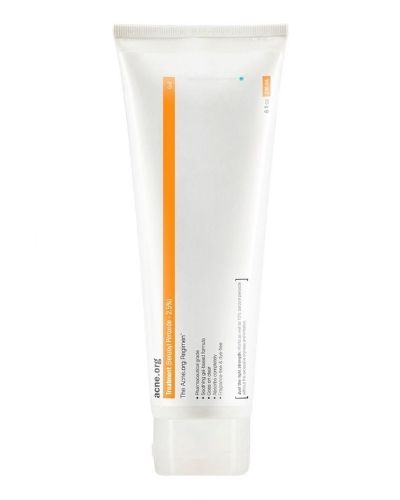
The 2.5% Benzoyl Peroxide by Acne.org has certainly been a lifesaver for me when dealing with cystic breakouts.
I still occasionally use it as a spot treatment, especially when I feel like a huge and deep cyst is forming under the surface of my skin.
This formula comes in gel-cream consistency, and it can be used daily or a few times a week if your skin is sensitive to it.
RELATED: How Does Benzoyl Peroxide Work?
Adapalene Gel 0.1% Topical Retinoid – $30
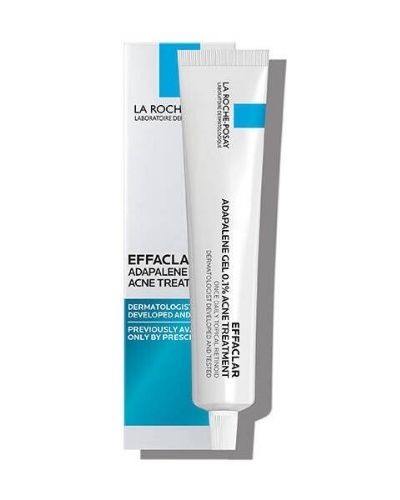
La Roche Posay’s Adapalene Gel is a strong anti-acne medication that can work great on moderate to severe cystic acne.
It can be extremely beneficial, but its initial side effects are dryness, irritation, peeling, and sensitivity, which usually last for a few weeks until your skin gets used to it.
Make sure to use any retinoid but especially Adapalene in the evenings, followed by a good moisturizer and a high SPF in the morning.
Tretinoin – $$
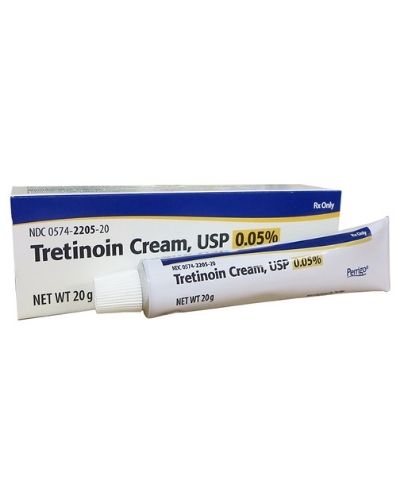
Tretinoin is definitely the game changer and the last resort before you start considering Accutane to deal with cystic acne.
Tretinoin is a retinoid and a stronger option than Adapalene that’s only available through prescription in most countries in the world.
It works by speeding up cell turnover (the rate that your skin produces new cells and sheds them from its surface.)
Slow skin cell turnover, as I already mentioned above, can be one of the main causes of cystic acne because it’s one fragment of what leads to clogged pores and an overgrowth of bacteria.
Therefore, after starting tretinoin, your skin cells will travel faster to the surface, purging clogs in the process and revealing a brighter, smoother, healthier, and more unified complexion.

My name is Simone and I am a certified skin specialist. I created this website to teach my readers how to take great care of their skin and I also like to occasionally share my honest opinions on skincare products I’ve tried. You can learn more about me here.
